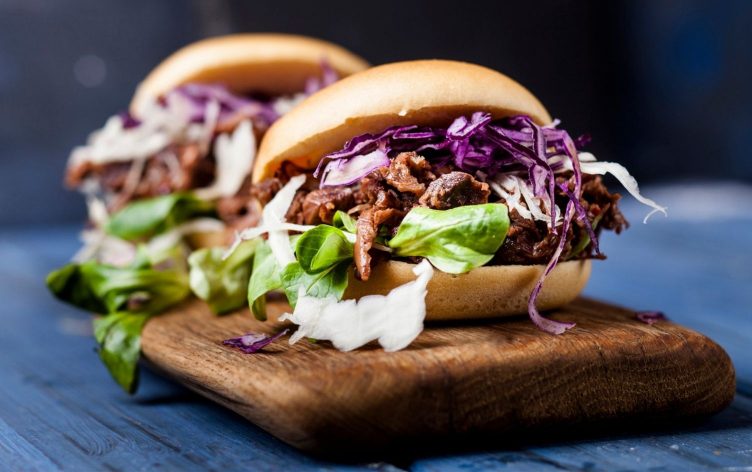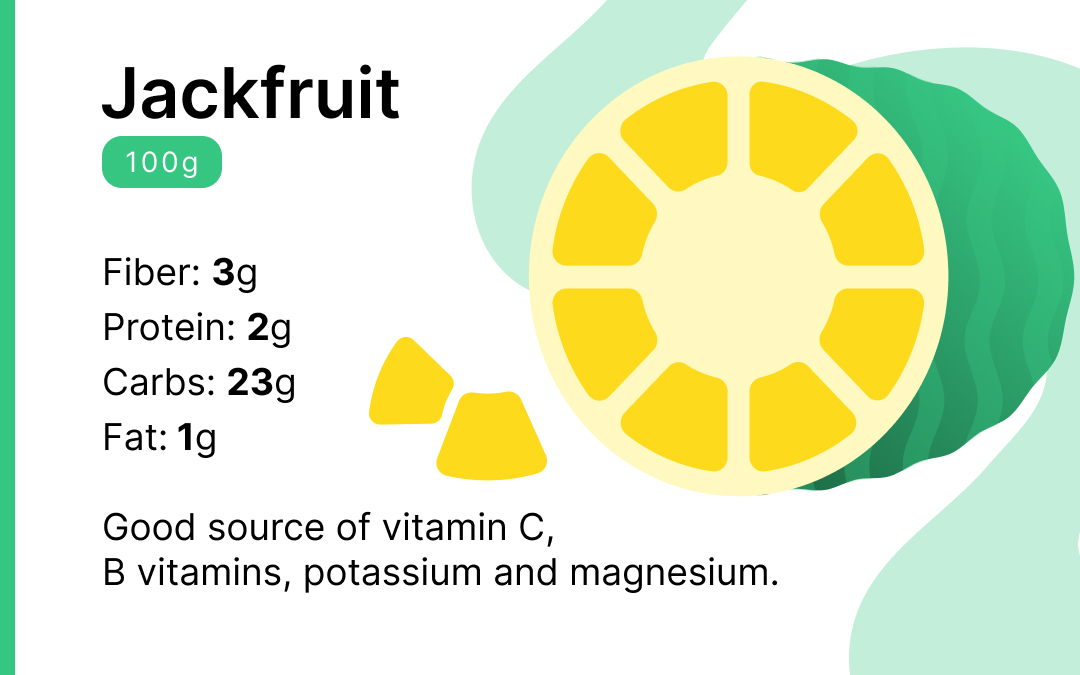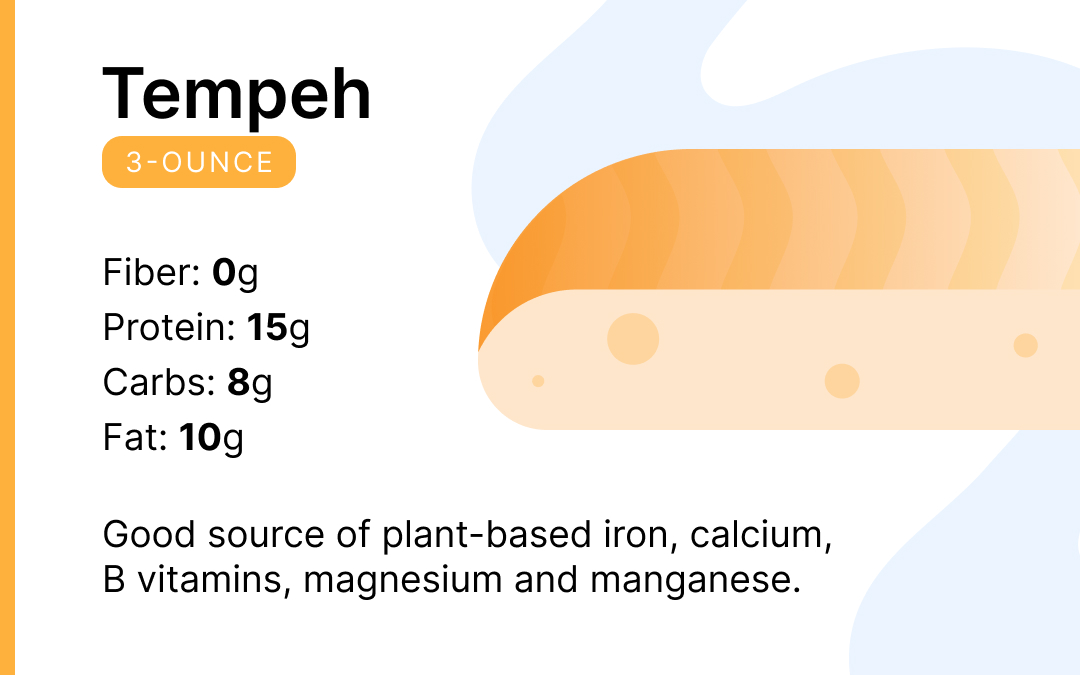
All About Alternatives: Meat
We are not lacking for meat substitutes these days, especially with the growing popularity of a plant-based (or “plant-forward,” as I like to call it) diet. The health benefits of eating more plants are numerous and well-researched, but putting this behavior into practice can be a challenge for some people. Enter: alt meats. The somewhat recent development of Impossible and Beyond burgers makes it a bit easier to make the plant-based choice without sacrificing the “meaty” flavor many people crave. Both options use a plant-based “heme” that mimics a meat-like flavor unlike any prior vegetarian meat products. Other meat substitutes that have been around for longer shouldn’t be overlooked either, as they all offer a variety of flavors and nutrient density. Let’s get into the details.

Jackfruit is a tropical fruit with a thick outer rind that can weigh up to 40 pounds. The inner flesh has become a popular meat substitute because of its heartiness and ability to take on savory flavors. Like other fruits, jackfruit is a good source of fiber, with about 3 grams per 100 grams of the fruit, and is a good source of vitamin C, B vitamins, potassium and magnesium. Unlike other meat substitutes, jackfruit is not a good source of plant-based protein, containing only 2 grams per 100 gram serving. This is important to keep in mind when putting together your meal and ideally, make sure another plant protein source is present (like beans or any of the ideas below!) if jackfruit is the main event of a dish.
IMPOSSIBLE BURGER
The Impossible burger is one of the newer “alt” burgers that is plant-based, but was developed to have a taste and texture similar to beef. The Impossible burger is comprised of soy and potato protein, a genetically engineered form of heme (made from soy plants and fermented yeast), plant oils, and binders to hold everything together. A 4-ounce Impossible burger contains 19 grams plant-based protein, 9 grams carbs (3 grams fiber) and 14 grams fat. It’s a good source of B vitamins, plant-based iron, potassium and zinc. Impossible burger can be used in any recipe that calls for ground beef.
BEYOND MEAT
Beyond Meat was also designed to have a taste and texture like meat, but differs from Impossible burger in that its main source of protein is from peas and rice, not soy. It also contains potato starch, and uses beet and apple extract for its meat-like taste, color and texture. Its nutrition is similar to the Impossible burger, with every 4-ounce serving of Beyond Meat containing 14 grams fat, 20 grams protein and 7 grams carbs (2 grams fiber). It’s also a good source of B vitamins, plant-based iron and zinc.

Seitan is a meat substitute made entirely of wheat gluten and water. It has a texture similar to meat and can be made into anything from a burger to Bolognese sauce. It’s high in protein and low in carbs and fat, containing about 20 grams of protein per 3-ounce serving, no fat and less than 5 grams of carbohydrates. Seitan is also a good source of plant-based iron and phosphorus. Seitan is a good option for vegans or those who want to consume more plant-based meals who have a soy allergy. However, you should steer clear if you have Celiac disease or sensitivity to gluten.

Tempeh is a soy protein made up of fermented soy beans. It’s more sturdy and heartier than tofu, and can take on a variety of different flavors based on how you cook it, how you marinate it, or what type of sauce you accompany it with. Soy is one of the few complete plant-based proteins, meaning it contains all of the essential amino acids and packs about 15 grams per 3-ounce serving. It’s also a good source of plant-based iron, calcium, B vitamins, magnesium and manganese. I love using tempeh as my protein in veggie and grain bowls and even in sandwiches with a delicious peanut sauce.
THE BOTTOM LINE
Variety is the spice of life — with meat alternatives and diet in general. Any of the “alt meat” options above are great choices if you are looking to incorporate more plant-based meals into your diet, but if you notice you’re only having one or two of the above on repeat for every meal, it’s time to mix things up. It’s important to remember that the health benefits of eating more plants — reduced risk of cardiovascular disease, diabetes and some cancers, to name a few — does not inherently exclude animal products like wild salmon, eggs, Greek yogurt and chicken, which are all nutrient-dense (and delicious) foods I also encourage. I guide the majority of my clients to consume diets that consist mostly of plants, but even when doing so there is plenty of room for quality animal products (and cookies and french fries!), too.




























